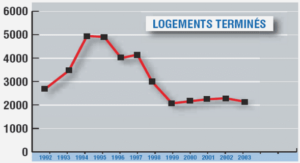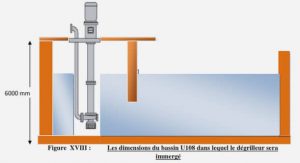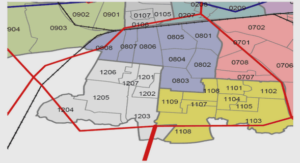Soil Shrinkage Curve measurement
Constructed Technosol samples were collected from the surface of each container using a 5 cm tall, 5 cm diameter cylindrical punch (one per container, n = 24). The cylinder was pressed delicately into the mixture far enough to fill the inner cylinder without compacting the soil. To facilitate sample manipulation, permeable fabric was placed at the base of each cylinder and held in place by a rubber band. Cylinders were then placed on a wet porous plate for saturation with deionized water at 18°C in the dark, according to manufacturer instructions (Sandbox, Eijkelkamp, Netherlands), for seven days by applying a water potential of 0 kPa at the base of the sample. The experimental procedure to measure the SSC consisted of simultaneous and continuous measurements of the height, diameter, and weight of the saturated soil cores during water removal by evaporation in an experimental retractometer© (Braudeau et al., 1999b). Water-saturated Technosol samples were placed in an oven at a constant temperature (30°C) to provide continuous and rapid evaporation. An electronic scale (0.01 g precision) ensured accurate measurement of water loss during drying. Each sample volume (diameter, height) was determined with vertical and lateral laser beams (resolution of 10 µm) and recorded along with its mass (nominal precision 0.01 g) every ten minutes. The experiment was stopped when the mass of the soil sample after water loss remained constant. This occurred generally after 3-4 days and a minimum of 400 measurements.
At the end of measurements, samples were dried in an oven at 105°C for 48 hours to measure their dry mass. These data were converted into soil specific volume (V, m3soil kg-1dry soil) and water content (W, kg water kg -1soil). The data obtained by shrinkage measures were fitted according to the SSC model (Braudeau et al., 2004). In this model, the SSC is subdivided into a maximum of four shrinkage phases (interpedal/saturated (ip), structural (st), basic (bs) and residual (re) shrinkage phases) that are 80 due to four types of water (Wip, Wst, Wbs, Wre) (Fig. 1). The pedostructure is considered an assembly of primary peds (aggregates made of the clayey particles) that determines two nested levels of organization: the macropore level (containing Wma = Wip + Wst) and the micropore level (containing Wmi = Wre + Wbs). The three transition points separating the four pseudo linear shrinkage phases (Fig. 1) are points L, M and N, which are at the intersection of the tangent straight lines of the linear phases. According to this model of the SSC (Braudeau et al., 1999b, 2004), the value of the water content at each point is equal to the value of max(Wst) for WL, max(Wmi) = max(Wre) + max(Wbs) for WM, and max(Wre) for WN. The other hydro-structural parameters are: slope of the saturated phase (Kip), slope of the structural phase (Kst), slope of the basic shrinkage phase (Kbs), slope of the residual phase (Kre), and three parameters (kL, kM and kN) related to the SSC shape at points L, M and N, respectively.
Water retention curve measurements
The analysis that is complementary to that of the SSC for characterizing the influence of organic matter on pore size distribution is WRC (Grimaldi et al., 2002), which was measured separately on samples taken from each of the 24 experimental units, as for SSC. Technosol samples were collected using cylinders 3 cm tall and 5 cm in diameter, gently pressed down across the surface of the same containers used previously for SSC. Each cylinder was then placed on a wet porous plate for saturation. A range of matric potentials between water saturation (0 kPa) and permanent wilting point (-1554 kPa) was applied to the same cylinder using a sand box for high matric potentials (-0.2, -0.98, -3.1 kPa) and a pressure-plate apparatus (Richards, 1948) for lower ones (-31, -98, -155, -491, -1554 kPa). The matric 82 potential applied by the pressure-plate apparatus was corrected using the thermodynamically based equation (4) to calculate the water potential pressure (h) according to the air pressure equilibrium applied in the Richard apparatus, (Braudeau et al., 2014): h = 137.72 ln ( / 100 + 1) (4) where h and are expressed in kPa.
Then, WRC was calculated according to the van Genuchten equation (van Genuchten, 1980): W Wr + (Ws – Wr) / (1+ ( n (5) where W is the water content (cm3 water.cm−3 soil) the matric water potential (cm), Ws the saturated water content (cm3 .cm−3 ), Wr the residual water content (cm3 .cm−3 ) (cm−1 ) is related to the inverse of the air entry suction, and n refers to the pore-size distribution. After WRCs were calculated, the Jurin-Laplace equation (6) was used to convert the water matric potential at points L, M and N into maximum equivalent size (considering cylindrical tubes) of water saturated pores (Grimaldi et al., 2002). Pc= P0 –Pw = (4 cos deq = -h (6) where Pc = capillary pressure, P0 = atmospheric pressure; Pw = water pressure (all in Pa); = surface tension of water (75 10-3 Nm-1 ) ; = contact angle of water with the pore walls (0°, if the water completely moistens the solid particles); deq = equivalent size of the pore, corresponding to the diameter of a cylindrical capillary (therefore, also « equivalent diameter ») or twice the distance between the two walls of a fissure (in m); and, h = matrix potential of the water (in Pa).




